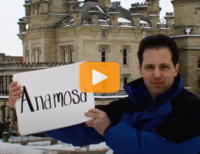15% of one Montana district’s population is prisoners; largest vote dilution yet seen
by Peter Wagner, January 10, 2005
Our recent Importing Constituents: Prisoners and Political Clout in Montana report found one district that was almost 15% prisoners, a higher figure than in any other state legislative district yet discovered in the United States. A little known quirk in the Census counts people in prison as if they were residents of the prison town. This inflates the population of rural prison hosting areas, and shortchanges the areas most prisoners come from.
Prisoners can’t vote in Montana, and on their release they will be returning to their home communities, but their presence at the prison town in the Census dilutes the votes of their family members back home.
Susan Fox, the Legislative Services Division redistricting coordinator in Montana told the Missoula News that the report was “…. fascinating and important… I’ve never had anyone bring this up before.” In an editorial discussing the report, the Great Falls Tribune said how the Census Bureau counts prisoners is “worth re-examining before the 2010 Census-based reapportionment repeats the problem.”
The size and racial distribution of Montana counties are distorted by the Census practice. Almost 19% of Powell County’s population is in the Montana State Prison. Eighty-one percent of the Native American adults counted by the Census in the county are not local voting residents but disenfranchised prisoners from other parts of the state.
“I don’t know many prisoners that are from Deer Lodge, but that’s where the state’s largest prison is,” said Casey Rudd, director of Connections in Bozeman which helps prisoners reenter society. “Montana doesn’t let prisoners vote until they are released, and when that day comes, prisoners leave the prison town and go home,” she added.
The report identifies one district, House District 85 (Powell and Deer Lodge counties) that counts among its census population 1,308 incarcerated people. The District is almost 15% prisoners, making the votes of 85 residents in the district worth the same as 100 residents elsewhere in the state. This is 3 times larger than the maximum population variations typically allowed by the Supreme Court.
Like most states, Montana has an election law statute that says that a prisoners residence remains her or his pre-incarceration address. Yet because the Census counts prisoners as residents of the prison, state legislators who wish to draw legislative districts that reflect the actual populations of their communities are unable to do so.
Historically, the Census Bureau has proven itself to be an agency very responsive to the needs of its data users. The method of counting other special populations has changed numerous times, in each case responding to changing demographics and needs in the country. When evolving demographics meant more college students studying far from home and more Americans living overseas, the Census policy changed in order to more accurately reflect how many Americans were living where. Today, the quadrupling of the prisoner population requires the Census to update its methodology once again. Continuing to credit prison towns with the presence of the prisoners is neither a fair nor accurate way to count the population in a state.



